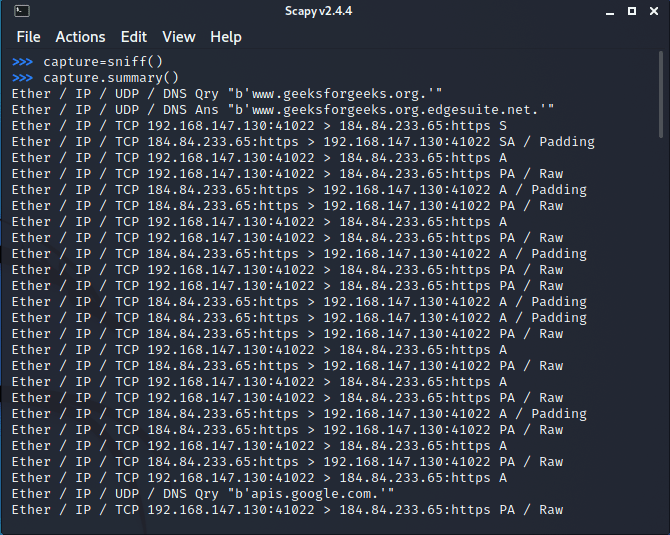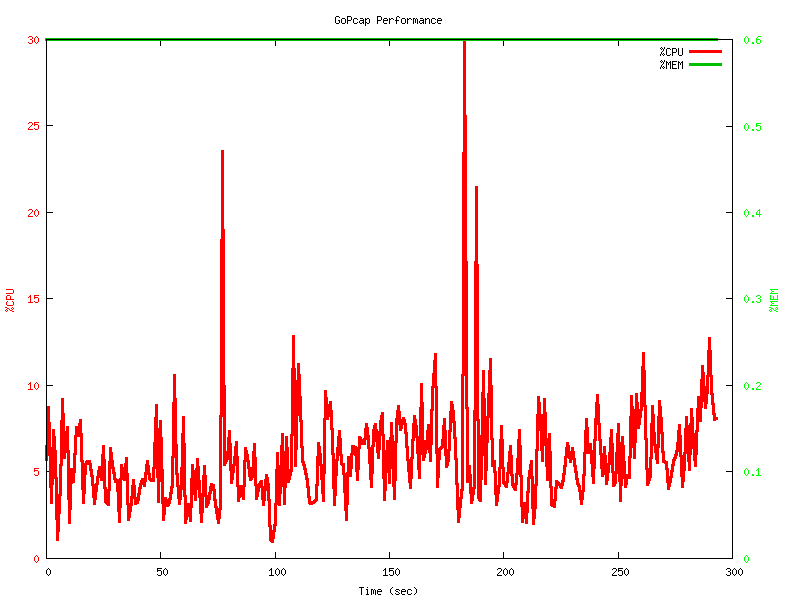

#Scapy http sniffer code#
On the first try, the above code functioned perfectly and I immediately saw all the incoming and outgoing packets as I browsed through different webpages to trigger http traffic. My co-worker’s Google-Fu quickly found that the Scapy package has a sniff feature, and yes, it is a one-liner. And this time, Python did not disappoint me. My past experience with Python is that it often comes with magical one-liner that just finish my job. So I chose Python for some rapid prototyping to get a feel for the problem. The project does not have high data rate requirement. In other word, I need to write a IP packets sniffer similar to tcpdump or wireshark. The stored pcap files can be analyzed using Wireshark, tcpdump, WinDump, Packet Square, etc.Recently my latest project came with a strange requirement – I need to route IP packets from Linux kernel space to user space. Where capture is the list of sniffed packets. Running the following command will write the sniffed packets in a pcap: wrpcap("", capture) Scapy also allows us to store the sniffed packets in a pcap file. This allows us to do some custom actions with each packet sniffed. Sniff() function has another interesting parameter called prn that allows you to pass a function that executes with each packet sniffed. The iface can either be an element or a list of elements. However, we can explicitly mention the interfaces that we would like to sniff on using the iface parameter. When scapy sniffs packets, it generally sniffs from all of your network interfaces. Similarly, you can filter any packet on the basis of source/destination IP address, port number, protocol and lot more by using the BPF syntax. The following command will capture only TCP packets: sniff(filter="tcp", count=5)

It uses a Berkeley Packet Filter (BPF) syntax. You can also filter packets while sniffing using the filter parameter. By specifying a value for the count, the packet capturing will be restricted to the specified number. To restrict the number of packets to be captured sniff() allows a count parameter. The sniff() function listens for an infinite period of time until the user interrupts. To see the summary of packet responses, use summary(). The sniff() function returns information about all the packets that has been sniffed. To sniff the packets use the sniff() function. Now that we have scapy installed, open scapy shell by typing “ scapy” in your terminal. To work on scapy, we need to have scapy installed on our computer.
#Scapy http sniffer how to#
In this article, we will learn how to sniff packets using scapy and store the sniffed packets in a pcap file. The captured packets are usually stored for future analysis.
#Scapy http sniffer download#
The sniffed packets give away a lot of information like what website does a user visit, what contents does the user see, what does the user download and almost everything. Packet sniffing is the process of capturing all the packets flowing across a computer network. How to Hack WPA/WPA2 WiFi Using Kali Linux?Īs mentioned before scapy performs a wide range of networking tasks and one such task is packet sniffing.Mutex lock for Linux Thread Synchronization.SORT command in Linux/Unix with examples.AWK command in Unix/Linux with examples.Sed Command in Linux/Unix with examples.ISRO CS Syllabus for Scientist/Engineer Exam.ISRO CS Original Papers and Official Keys.GATE CS Original Papers and Official Keys.


 0 kommentar(er)
0 kommentar(er)
